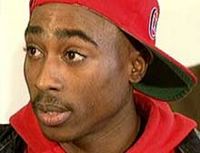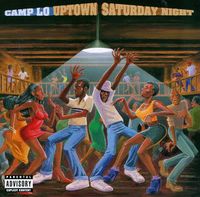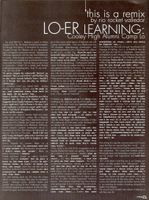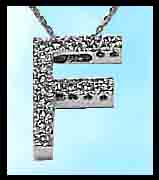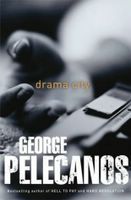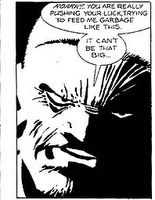
 Asian dudes in black on the roof with a right arm extended...'Old Boy'
Asian dudes in black on the roof with a right arm extended...'Old Boy' and
'Infernal Affairs' tell us less about Asian cinema than the latest spin of good ol' American pulp. 'Old Boy is the breakthrough of Korean pop-pulp and 'Infernal Affairs' is the blockbuster revival of the Hong Kong policier/gangster flick. Although similarly steeped in stylized genre beats, inevitable violence and ripe sentiment, only one succeeds as a solid genre picture.
'Old Boy' seems to take the most chances as it slides from a surrealistic set-up in a Kafkaesque 'cell' into a Richard Stark style man-on-fire B-line momentum. Lush and dark, grisly and silly...
Fincher and Tarantino influence reigns over a current school of filmmaker. And of course that influence is loaded with earlier pulp incarnations. Tarantino's revived the Nouvelle Vague's focus on US genre and championed John Woo's gun-fu pop. Q translated
'spaghetti westerns' into postmodern gangsters but
Leone's cowboys were influenced by
Yojimbo flicks which were a Japanese homage to American Western heroes.* And even more telling is the fact that Yojimbo was actually an adaptation of
Hammett’s ‘Red Harvest’ dealing with, you guessed it, American gangster mythology.
'Old Boy' piles on even more references. His
voyeuristic Hitchcock sequences are more successful than the bland framing at the end whch evokeds the gloss and sentiment of
Michael Bay's Hollywood 'bangers.' The fight scenes don't have the choreography of
Woo or
Wu Ping but instead generate nervous laughter via
simple brutality with unexpected instruments. All of this fits nicely with the fact that Tarantino guided the Cannes jury in selecting 'Old Boy' as the recipient of the Grand Prize. Unfortunately the attempts to squeeze in complex human drama between the genre elements do not succeed the way
Jake Gittes’ snooping revealed layers of evil in 'Chinatown'. 'Old Boy' doesn't convey the tragedy it needs to because we can't sympathize deeply with the simple man on a mission of revenge. That story CAN work, as in the cold hearted
'Point Blank' adaptation of
Stark's Parker novels but those stay true to genre and THAT ironically is what ELEVATES them to existential query.
'Infernal Affairs' performs a similar feat. The set-up is explained in a series of quick cuts that take about as long as an extremely high-concept film pitch: Undercover cop, Undercover gangster, Cross paths. The Woo 'brothers-in-conflict' tropes (surprisingly perfected in the
Fat-free
'Face Off') are the closest to the ‘Infernal’ combination of
the allegiance of ‘Donnie Brasco’ and the
Mann-twins in 'Heat'. Luckily both the leads take Deniro's minimalist macho instead of Pacino's puffing and the supporting cast shows a depth of character that is often left out of genre pics. The amount of tension and suspense that is squeezed from the thin wedge of the plot is impressive as well. The simple material is finely honed, carefully avoiding any decorative pretensions, and somehow it becomes an object for meditation. Go figure. It is appropriate and thrilling to learn that Scorsese will return to the grey morals of gangsterism when he does
the American adaptation of 'Infernal Affairs.' And the pulp wheel goes round and round,
*One should note that although 'The Magnificent Seven' was based on 'Seven Samurai,' Kurosawa's posse cut was an homage to the popular excitement generated by American westerns, another pulp staple.



